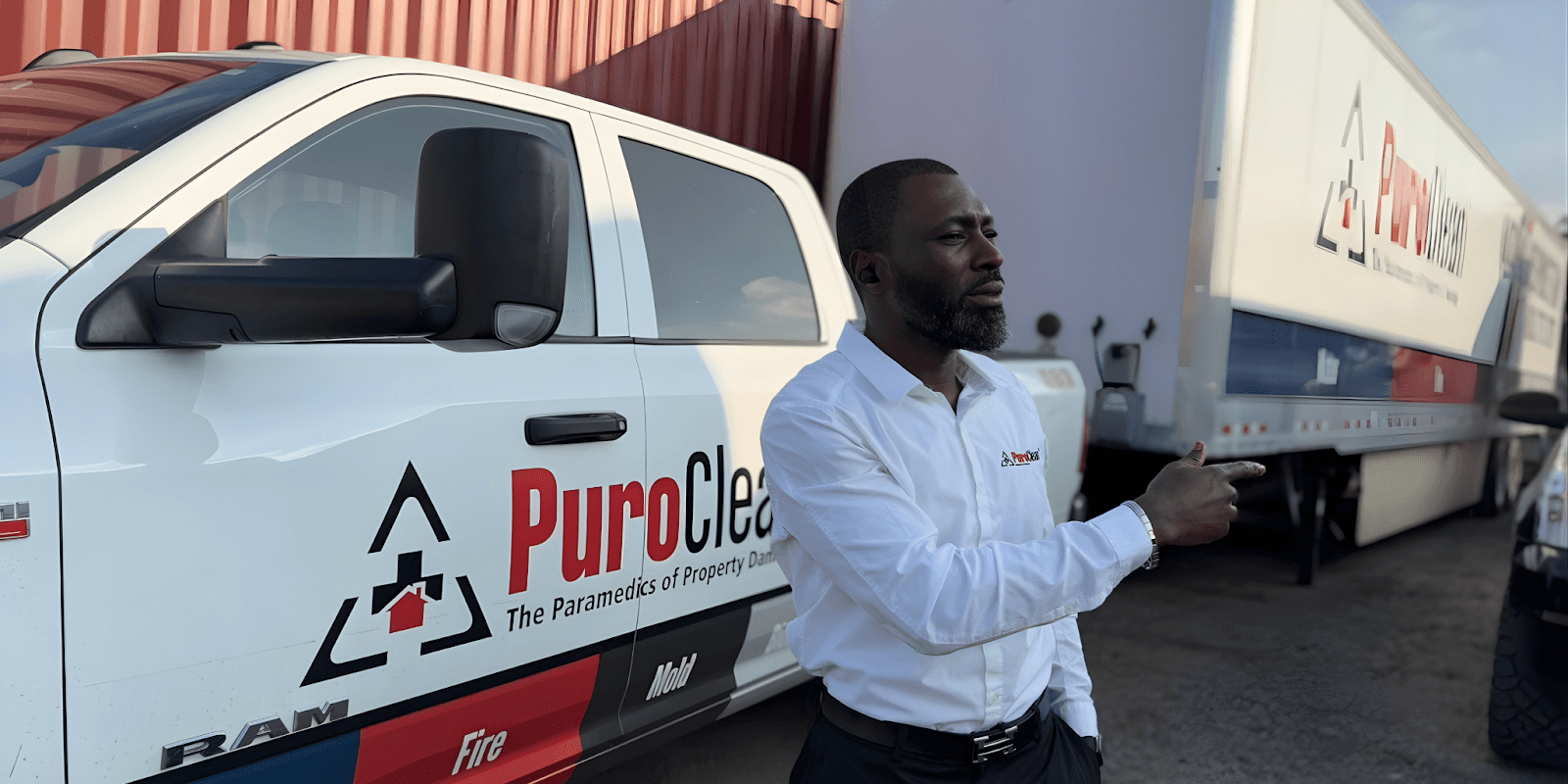11 Lessons Learned from Managing Over $50 Million in Annual Ad Budgets for Nike, PFF and Other Direct-to-Consumer Brands
George Jurma shares 11 key lessons learned from managing $50M in ad budgets, emphasizing speed, market validation, and execution.
By
Jul 29, 2025
A few words from George Jurma, co-founder of AD Virals Media Agency:
When you're in meetings with Harvard and Stanford graduates and managing $5M in monthly ad spend, you quickly learn the rules are very different from those in Europe.
Over the past few years, I've had the privilege of working with some of the world’s leading Health & Wellness brands — including Nike Studios, Pro Football Focus (PFF), Mountain Ops, and other companies generating over $100M annually. From managing performance marketing budgets exceeding $5M/month and countless Zoom calls with U.S. executives, I’ve distilled 11 powerful lessons that separate mediocre results from elite performance.
These experiences not only shaped my professional journey — they’re the foundation of how we build profitable campaigns today at AD VIRALS MEDIA for ambitious brands in Romania and the U.S. Every lesson learned has been transformed into a system, a process, or an operational framework applied directly in our clients’ accounts.
1. Speed Is Everything – Theoretical Research Is a Luxury You Can’t Afford
In the world of top brands, the competition moves at lightning speed. For nearly two years, I saw how campaigns launched even one week earlier could capture a significant market share. At Nike and other industry leaders, there’s no time for months-long feasibility studies. You test fast, learn on the go, and iterate. Perfection is the enemy of good — especially when timing is critical.
How do we apply this for our clients in AD VIRALS MEDIA:
We emphasize execution speed in all campaigns — whether for American or Romanian brands. Our rapid testing framework (launch within 48h) lets us collect real data from the market, not just assumptions, and iterate without missing the opportunity window.
2. Validate the Market Before You Jump In – Ask for Signals, Not Sales
Top brands never launch a product without testing market demand through presell campaigns. I’ve worked on tests where we validated interest for products still in development. The key lesson? Don’t ask for a sale — ask for a signal. An email. A pre-registration. A “Notify Me.” These signals are stronger than sales for validating true demand because they remove financial friction.
How do we apply this for our clients in AD VIRALS MEDIA:
When testing a new product or offer, we don’t wait for purchases to validate the idea. We quickly launch ads with different angles and track reactions: sign-ups, clicks, notification requests. These signals tell us clearly whether the idea is worth scaling.
3. Task Ownership Eliminates Organizational Friction
In every successful project I’ve managed, responsibilities were crystal clear. We don’t go for approaches like “the team handles the creatives,” but “John delivers the creative concept by Tuesday at 3 PM.” When you manage million-dollar budgets, ambiguous ownership costs time and money you can’t afford to waste.
How do we apply this for our clients in AD VIRALS MEDIA:
We’ve implemented a system of individual accountability. Every task has a “Designated specialist” for each major deliverable: ads, landing pages, copy, email flows. This model cut execution time by up to 40% and helped us stay agile across complex, fast-paced projects.
4. Message Alignment – From Ads to Email
Inconsistent messaging costs money. The ad copy, creative, landing page, and email flow must tell the same story. At Nike, I saw how perfectly aligned campaigns could achieve up to 40% higher conversion rates than fragmented ones.
How do we apply this for our clients in AD VIRALS MEDIA:
We use a tool called the “Message Bridge” — a core document that connects the ad hook with the landing page headline, storytelling sections, and post-click emails. This ensures consistency throughout the funnel and drives significantly higher ROAS and retention.
8. Move Fast, Even If It’s Not Perfect
This mindset may seem counterintuitive to many marketers, but at the $100M+ level, a product launched at 80% perfection on time beats a perfect product launched too late. I’ve seen Nike campaigns launch while still optimizing in real-time — and they worked.
How do we apply this for our clients in AD VIRALS MEDIA:
We prioritize launching a Minimum Viable Creative — the MVP version of the ads or funnel. This approach allowed us to launch campaigns in under 72 hours for fashion, beauty, and wellness brands — then scale based on actual market feedback, not just intuition.
9. Relevance Beats Creative Perfection
Your promotional calendar isn’t just a list of dates — it’s your strategic weapon. Winning brands know exactly what to say at each moment of the year. I’ve seen mediocre creative with perfect timing outperform brilliant creative launched too late.
How do we apply this for our clients in AD VIRALS MEDIA:
Each client gets a marketing calendar tailored to seasonality, customer behavior, and market context. We often test simple creatives that are perfectly timed — and they outperform visually polished, but contextually irrelevant ads.
10. Small Details Create Big Differences
I’ve worked with brands that scented every shipped package. Gyms testing different scents and ambient colors, collecting feedback from members. A supplement brand testing 15 label color variations for the same product. These details may seem extreme — but they create memorable experiences that fuel organic word-of-mouth and long-term loyalty.
How do we apply this for our clients in AD VIRALS MEDIA:
For us, details are non-negotiable. We constantly test design nuances, ad microcopy, the first 3 seconds of a video, button styles, or headline tone. Every small piece contributes to a cohesive experience that feels premium — and converts.
We even have a case study that proves this principle:
How We Grew Revenue by 70% for a Fashion Brand.
11. Ads Platform Data Can Be Misleading
The most expensive lesson: attribution gaps between Facebook Ads Manager and reality can cost hundreds of thousands of dollars. I learned to fix this using server-side tracking — and never take platform metrics at face value. Cross-checking with internal analytics is a must.
How do we apply this for our clients in AD VIRALS MEDIA:
We focus on what truly matters: revenue collected on-site and actual orders — not the glossy numbers inside Facebook or Google Ads. Too often, platforms “borrow” each other’s conversions. That’s why our decisions are driven by backend data, not dashboards.
These lessons weren’t learned from books or courses, but from the trenches — in million-dollar campaigns and Zoom calls where each decision could define a quarter’s success or failure. In the world of top-tier brands, theory is easy. Flawless execution is earned — and that’s what makes the difference.
About the author: George Jurma has worked in marketing and DTC for 7 years. He has managed over $50M in annual budgets for brands like Nike Studios, PFF, and other companies generating hundreds of millions in revenue. He is the co-founder of AD VIRALS MEDIA, alongside Florin Ciofu, helping brands in the U.S. and Romania scale through advanced performance marketing strategies on Meta, Google, and TikTok — plus sophisticated email marketing and retention campaigns.
For more information, visit: https://www.advirals.media














